After winning between 22 and 31 games for four straight seasons from 2018-21, the Bulls took a major step forward in the first half of 2021/22, going 27-13 with offseason additions DeMar DeRozan, Alex Caruso and Lonzo Ball playing key roles in their success. They were the No. 1 seed in the East on January 14 of last year.
Unfortunately, Ball tore his meniscus that day against Golden State, and hasn’t played a game since, having undergone three different knee surgeries to address persistent pain. Caruso dealt with multiple injuries of his own, and the Bulls weren’t the same team the rest of the way, going 19-23 to close out the season and getting eliminated in the first round of the playoffs as the No. 6 seed.
Caruso was healthier in ’22/23, but Ball’s void was felt all season long, with Chicago going 40-42 and entering the play-in tournament as the No. 10 seed. The Bulls were able to sneak past Toronto thanks to late-game heroics by Zach LaVine (after the Raptors went 18-of-36 on free throws and blew a 19-point lead), but fell in a close game to the Heat, who advanced as the No. 8 seed.
Chicago is a hard team to pin down. You would expect a club led by three offense-first multi-time All-Stars to be highly effective on that end, but after ranking 13th last season, they were just 24th in offensive rating in ’22/23. Similarly, you would not expect them to be stout defensively, yet after ranking 23rd a year ago, they had the fifth-best defense in the league this season.
The Bulls’ Offseason Plan:
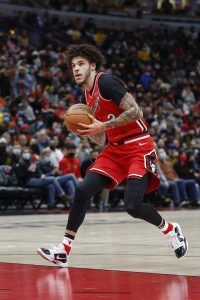 Chicago has a couple great players (LaVine and DeRozan), an All-Defensive First Team guard (Caruso), and some young talent. Still, it feels like the Bulls are stuck in no-man’s land.
Chicago has a couple great players (LaVine and DeRozan), an All-Defensive First Team guard (Caruso), and some young talent. Still, it feels like the Bulls are stuck in no-man’s land.
A big part of that is due to Ball’s balky knee, and there’s still no timetable for his return – it’s possible his career could be over. It has been a brutal series of events, because Ball is a very good two-way player. The Bulls have gone just 59-65 since he was injured – a large sample size of blah play.
Having a $20.5MM cap hit on your books (and a $21.4MM player option for ‘24/25 that Ball will certainly exercise) for a player who might not play at all for a second consecutive season really hurts your team’s flexibility. It’s no one’s fault either. Sure, Ball had injuries in the past, but nothing like this.
The Nikola Vucevic trade was an unmitigated disaster, but the Bulls don’t have a viable way to replace the impending free agent’s production, so it feels like they need to extend him, re-sign him, or at least explore sign-and-trade scenarios. They can’t just lose him for nothing. He played well in 2022/23 after a down year in ’21/22, but he’s limited defensively and will be 33 years old at the start of next season.
That deal is why the Bulls don’t have a lottery pick in June’s draft — it landed 11th overall and will be sent to Orlando to complete the trade (they also gave up Wendell Carter and their 2021 first-round pick, which turned into Franz Wagner – ouch). Chicago also doesn’t control its second-rounder (via Denver) due to free agency gun-jumping when the team completed its sign-and-trade for Ball.
With nearly $112MM committed to just six players, and a couple of $3.4MM player options (Andre Drummond and Derrick Jones Jr.), becoming a cap room team doesn’t make sense. Even if Drummond and Jones opt out, the Bulls would only be able to create about $16MM in space. They would be better off re-signing some of their own free agents and using their $12.2MM non-taxpayer mid-level exception, but they can’t just bring back the same core roster again and expect different results.
DeRozan turns 34 years old this summer, is entering the final year of his contract, and will be eligible for a veteran extension. That makes him a logical trade candidate, but his age, expiring deal, subpar defense and well-documented playoff struggles somewhat limit his market value.
Don’t get me wrong, I have a ton of respect for DeRozan. You can tell he puts a ton of work into his craft, and he has improved tremendously throughout his career. I’m just not sure how much the Bulls could realistically get for him if they made him available – maybe a late lottery pick, matching salaries and a decent young player? That’s nothing to sneeze at, but it could take a while to translate into wins.
LaVine would have far more trade value. He’s only 28 and is under contract for four more years (the last year is a player option). The Knicks are a logical suitor, and reportedly talked to the Bulls about him ahead of the February deadline.
Do the Bulls want to trade the player they tried to build around? Do the Knicks want to trade multiple first-round picks and young players for a star who is a legitimately great shooter and scorer (they do need both of those things), but isn’t a great defender or decision-maker?
I don’t know the answer to either of those questions, but I do know Chicago’s current roster isn’t good enough to contend for a title and isn’t bad enough to land a top draft pick. The Bulls have to pick a path.
There’s nothing preventing the Bulls from trading both of their stars and starting from scratch. They could always prioritize young players instead of draft capital if they want to retool instead of doing a full-fledged rebuild. Caruso is worth keeping an eye on as well – the defensive stalwart drew a lot of interest leading up to the trade deadline and is on a team-friendly contract through ‘24/25, so he’d have quite a bit of value.
Aside from the big-picture roster questions, forward Patrick Williams will be eligible for a rookie scale extension this summer. I’d be a little surprised if a deal gets done. While Williams has a lot of upside, he’s also been very inconsistent (which is normal for a young player). I suspect there might be a gap in what his agents are looking for and what the team wants to pay.
That said, I would not trade Williams if I were running the team. He could be special if he figures it out, and even if he doesn’t, he’d still be coveted due to his two-way skill set. I’d also re-sign Coby White, who’s a restricted free agent – I think he’ll get somewhere around the mid-level exception, and he’s improved from his first couple seasons.
Salary Cap Situation
Guaranteed Salary
 Zach LaVine ($40,064,220)
Zach LaVine ($40,064,220)- DeMar DeRozan ($28,600,000)
- Lonzo Ball ($20,465,117)
- Patrick Williams ($9,835,881)
- Alex Caruso ($9,460,000)
- Dalen Terry ($3,350,760)
- Justin Lewis (two-way)
- Total: $111,775,978
Dead/Retained Salary
- None
Player Options
- Andre Drummond ($3,360,000): Non-Bird rights
- Derrick Jones Jr. ($3,360,000): Bird rights
- Note: Jones has said he plans to exercise his option.
- Total: $6,720,000
Team Options
- None
Non-Guaranteed Salary
- Carlik Jones ($1,927,896)
- Note: Jones would receive a partial guarantee ($250K) if he’s not waived on or before the first day of the 2023/24 regular season.
- Note: Jones would receive a partial guarantee ($250K) if he’s not waived on or before the first day of the 2023/24 regular season.
- Marko Simonovic ($1,836,096)
- Note: Simonovic’s salary would become fully guaranteed if he’s not waived on or before July 7.
- Total: $3,763,992
Restricted Free Agents
- Coby White ($7,744,600 qualifying offer / $22,241,865 cap hold): Bird rights
- Ayo Dosunmu ($5,216,324 qualifying offer / $5,216,324 cap hold): Early Bird rights
- Total (cap holds): $27,458,189
Two-Way Free Agents
Draft Picks
- None
Extension-Eligible Players
- Lonzo Ball (veteran)
- Alex Caruso (veteran)
- DeMar DeRozan (veteran)
- Marko Simonovic (veteran)
- Patrick Williams (rookie scale)
Note: These are players who are either already eligible for an extension or will become eligible before the 2023/24 season begins.
Unrestricted Free Agents / Other Cap Holds
- Nikola Vucevic ($33,000,000 cap hold): Bird rights
- Javonte Green ($1,989,698 cap hold): Bird rights
- Patrick Beverley ($1,989,698 cap hold): Non-Bird rights
- Matt Thomas ($1,989,698 cap hold): Non-Bird rights
- Total: $38,969,094
Cap Exceptions Available
- Mid-level exception: $12,220,600
- Bi-annual exception: $4,448,000
Note: The Bulls would lose access to the full mid-level exception and the bi-annual exception if their team salary surpasses the tax apron.

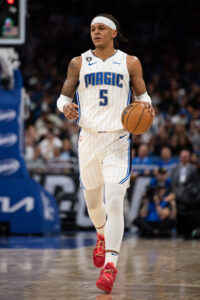
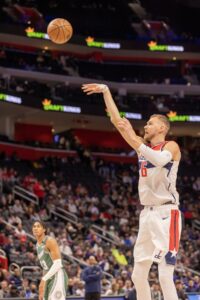 There were some positive developments —
There were some positive developments — 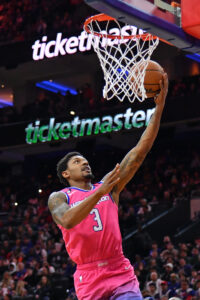
 This year’s draft pool features potential superstar
This year’s draft pool features potential superstar 
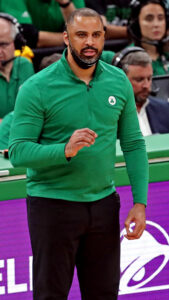 Houston Rockets
Houston Rockets
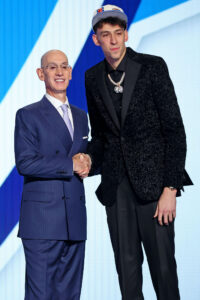
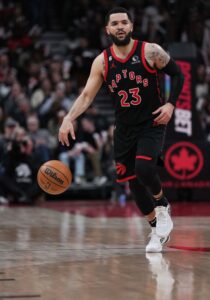 On paper, the Raptors looked like a team that should have finished better than .500.
On paper, the Raptors looked like a team that should have finished better than .500. 